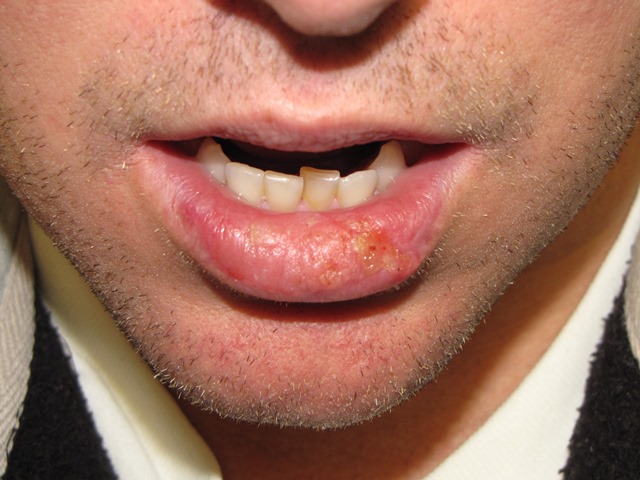Squamous Cell Carcinoma
Keratoacanthoma Right Lateral Canthus
In our case report, an 86 y.o. woman underwent excision of a right lateral canthus keratoacanthoma with Mohs surgery. The lesion recurred 2 months later spreading into the orbit and deep along the surface of the maxilla. She required a partial maxillectomy and orbital exenteration with post-operative radiation therapy. Forehead fasciocutaneous flap was used for…
Read MoreScalp Radiation for High Risk Skin Cancer – The Perils and the Perfect Storm
At the last SCARS Tumor Conference, we presented a 66 year old “Perfect Storm” patient with scalp lesions. He exhibited three critical characteristics: 1. extensive scarring by multiple dermatologic procedures required for the many skin cancers of his scalp – field cancerization effect 2. tissue hypoperfusion (smoker, peripheral vascular disease) 3. medical co-morbidities (CAD, advanced…
Read MorePeri-Auricular Neoplasm – Deception in Waiting
Peri-auricular subcutaneous lesions can be deceptive. These neoplasms have a higher risk of being non-dermal-related tumors than neoplasms of other areas of the face. Attempts at excision without consideration of a differential diagnosis can often lead to tumor compromise. Over the last several months, SCARS Center has treated several tumors previously excised partially by other…
Read MoreBasosquamous Cell Carcinoma
Metatypical basosquamous cell carcinoma is a subset of cutaneous cancers that poses an increased risk of metastases to the patient due to its aggressive behavior. The classic histology of metatypical basosquamous cell carcinoma includes features of both basal cell carcinoma and squamous cell carcinoma, as well as areas of intermediate differentiation. The cells are larger and…
Read MoreSquamous Cell Carcinoma Lower Lip
A man in his thirties with lifelong h/o severe actinic cheilitis of left lower lip. Recurrent flare-ups of cheilitis have been treated as recurrent herpetic infection. Recently he has experienced worsening of cheilitis and appearance of the lesion. Biopsy found squamous cell carcinoma with perineural invasion. Lip invasion was histologically measured to be > 2mm…
Read MorePerineural Invasion
Perineural invasion is strongly indicative of aggressive behavior and risk of metastases. True perineural invasion requires histologic finding of cancer invasion of the nerve or cancer invasion of the epineurium adjacent to the nerve. This must be distinguished from cancer near a nerve, cancer encompassing a nerve, and perineural inflammation. Cancer cells within the nerve…
Read More



